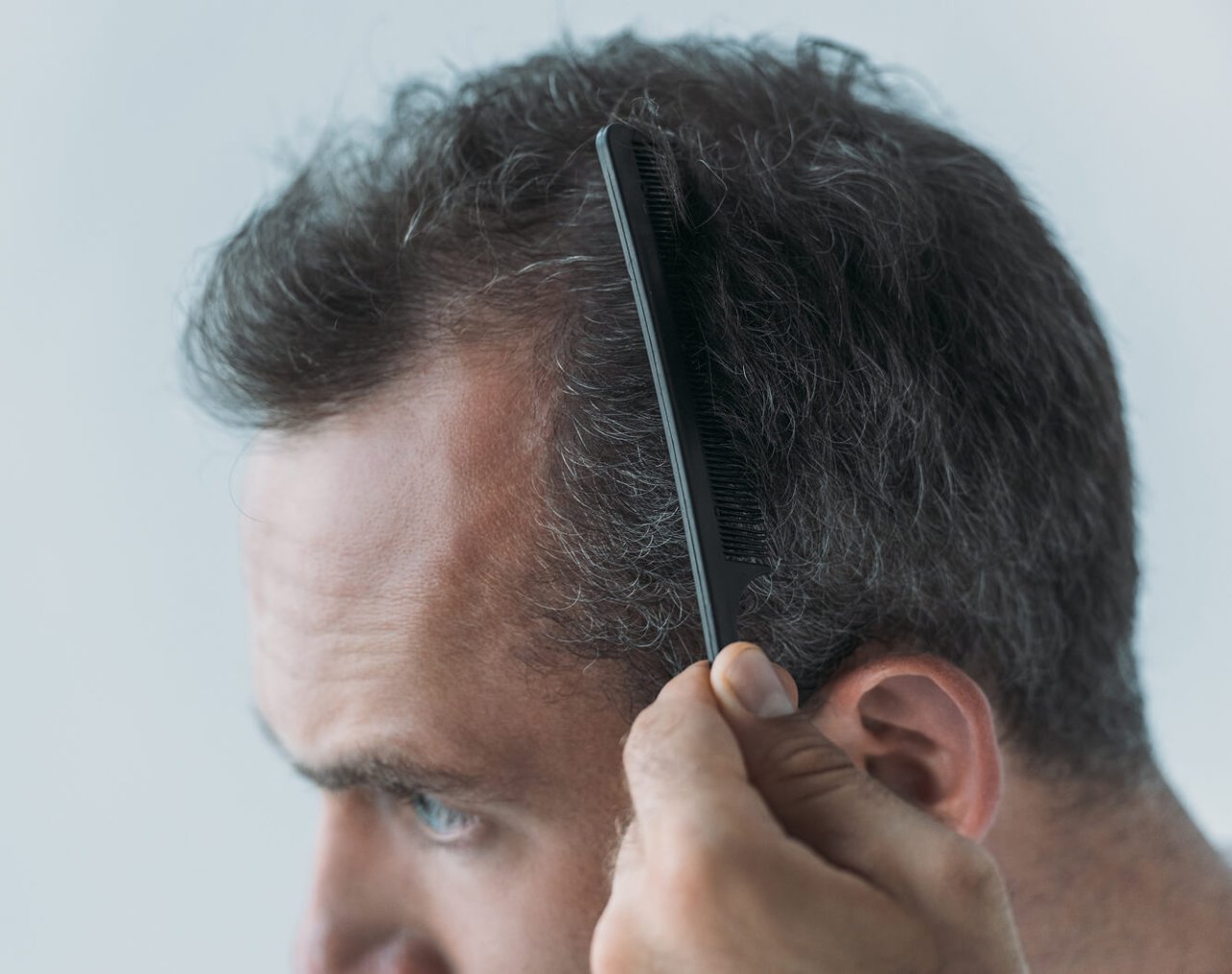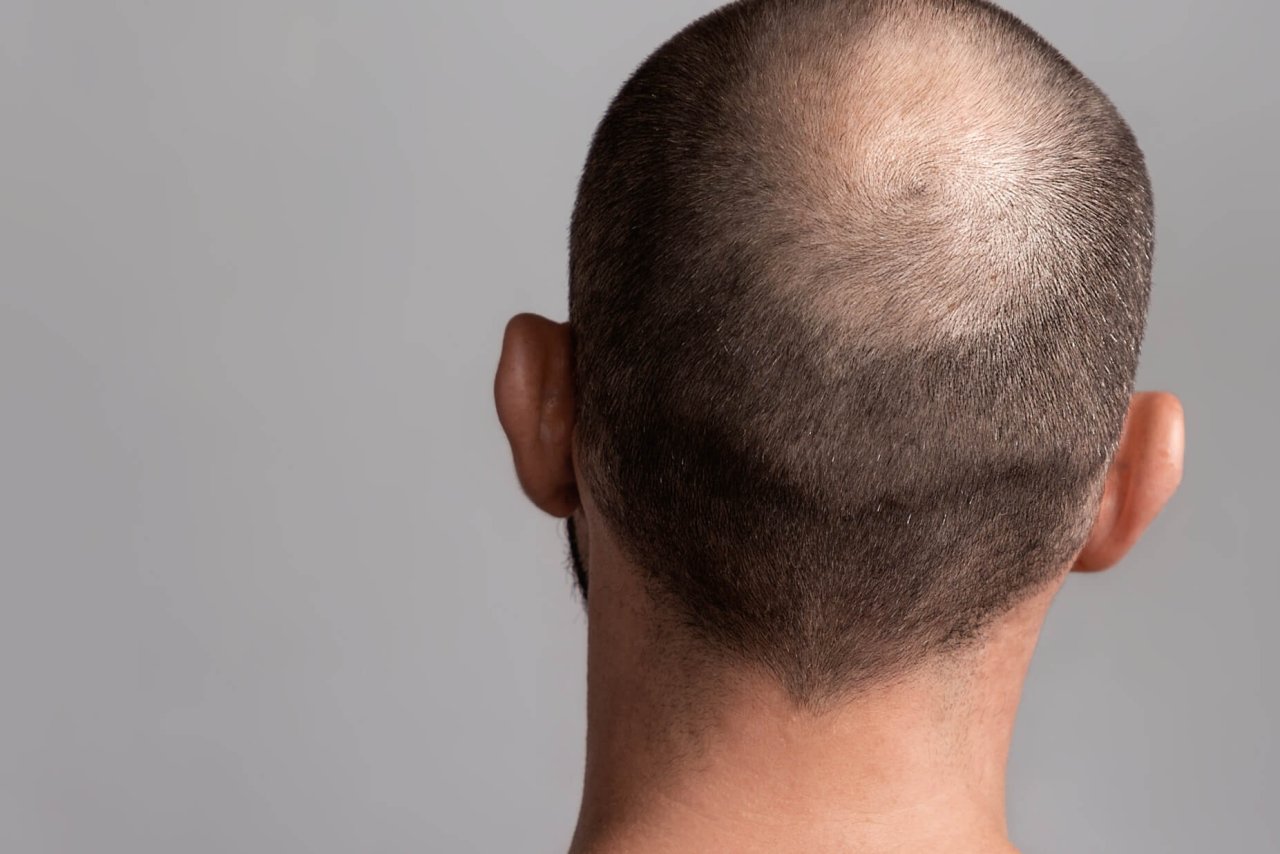Innovative solutions against hair loss.
We develop new therapies based on the immune modulatory protein MAL-856. Our goal is to offer effective treatments for hair loss forms, such as androgenetic alopecia and alopecia areata. By specifically activating the growing anagen phase of hair follicles, we create sustainable solutions that go beyond cosmetic approaches.

There are different types of hair loss - the most important are:
- Androgenetic alopecia (AGA), also known as male or female pattern baldness
- Alopecia areata (AA) which is an immune disease and causes patchy hair loss
- Telogen effluvium, a condition characterized by temporary hair shedding
- Traction alopecia caused by excessive pulling or tension on the hair
- Scarring alopecia which involves the destruction of hair follicles and subsequent scarring
Moreover, hair loss can also occur in women after childbirth or due to an underactive or an overactive thyroid, obesity-induced stress, diabetes, chronic inflammation, in conjunction with several skin disorders, autoimmune diseases, genetic causes or induced by various medications, irradation or chemotherpy.
Causes of hair loss.
Hair loss can have various causes, including genetic factors and hormonal changes as observed in male pattern baldness (AGA), immune mediated reactions as in alopecia areata (AA), infections, nutritional deficiencies, stress, side effects of medications, as well as hairstyles or hair treatments causing damage or tension to the hair.

Pattern and progression.
Androgenetic alopecia (AGA) typically follows a specific pattern starting with hair thinning at the temples and crown and gradually progressing to partial or complete baldness. Female pattern baldness often results in overall hair thinning. Other types of hair loss such as the immune mediated alopecia areata (AA) may appear as patchy or diffuse hair loss.

Psychological impact.
Hair loss can have significant psychological and emotional effects on individuals impacting self-esteem, body image, and overall well-being. Support from healthcare professionals, support groups, or counseling may be beneficial for individuals experiencing distress related to hair loss.

Indications for hair loss

Androgenetic alopecia.
Also known as male or female pattern baldness, this is the most common type of alopecia. It typically occurs gradually and is related to genetic and hormonal factors. In men, it often results in a receding hairline and baldness on the top of the head. In women, it leads to thinning hair on the crown of the head.

Alopecia areata.
This type of alopecia causes patchy hair loss on the scalp, face, or other parts of the body. It occurs when the immune system mistakenly attacks hair follicles resulting in immune mediated hair loss.

Alopecia totalis and alopecia universalis.
These are more extensive forms of alopecia areata. Alopecia totalis causes the complete loss of hair on the scalp, while alopecia universalis leads to hair loss on the entire body, including the scalp, eyebrows, eyelashes, and body hair.

Telogen effluvium.
This type of alopecia occurs when a significant number of hair follicles prematurely enter the resting phase (telogen) resulting in increased hair shedding. It can be triggered by various factors such as stress, hormonal changes, nutritional deficiencies, certain medications or underlying medical conditions.

Traction alopecia.
This form of alopecia is caused by repetitive pulling or tension on the hair often due to hairstyles like tight braids, ponytails, or hair extensions. The constant pulling damages the hair follicles leading to hair loss.

Scarring alopecia.
Also known as cicatricial alopecia, this type involves the destruction of hair follicles and subsequent scarring. It can be caused by various conditions like autoimmune disorders, infections, or inflammatory skin conditions.
Stay informed.
Whether it concerns the latest research findings, clinical updates, publications or business news – our dedicated Therapeutics News section keeps you well informed.
